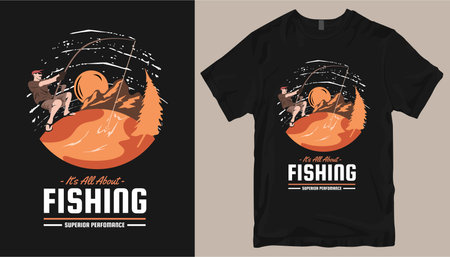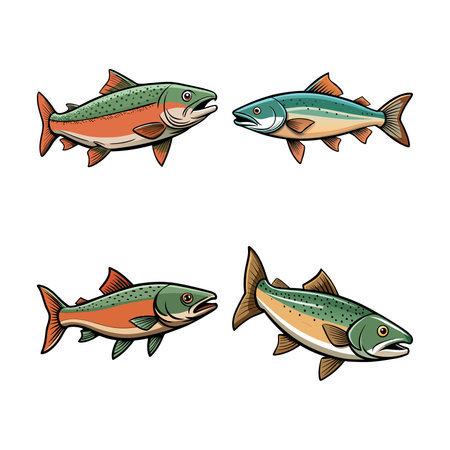1. Why Fishing Regulations Matter
When you’re new to fishing in the United States, it’s easy to get caught up in the excitement of casting your line and waiting for a bite. But before you head out, it’s important to understand why there are so many rules and regulations around fishing here. These aren’t just red tape—they exist to protect our wildlife, ensure fishing opportunities for everyone, and preserve our beautiful waterways for future generations.
Protecting Fish Populations
Fishing regulations help keep fish populations healthy by setting limits on what kinds of fish you can catch, how many you can take home, and even the size of the fish. This prevents overfishing and gives younger fish a chance to grow and reproduce. By following these rules, anglers play a direct role in keeping the ecosystem balanced.
Conservation and Sustainability
Many U.S. states require you to have a fishing license before casting a line in public waters. The money from these licenses goes straight into conservation efforts—like stocking lakes with fish, restoring habitats, and funding research to keep our waterways clean and thriving.
How License Fees Help Conservation
| Use of License Fees | Examples |
|---|---|
| Fish Stocking | Adding trout or bass to local lakes and rivers |
| Habitat Restoration | Cleaning up streams, planting native vegetation |
| Wildlife Research | Studying fish populations and water health |
| Educational Programs | Teaching kids about fishing and conservation |
Protecting Natural Resources for the Future
Fishing laws also help safeguard natural resources beyond just fish. They can include restrictions on bait types to prevent the spread of invasive species or guidelines for using eco-friendly gear. By respecting these rules, we make sure that America’s lakes, rivers, and coastlines remain healthy playgrounds for outdoor lovers now—and for years to come.
2. Understanding Fishing Licenses
If you’re new to fishing in the United States, figuring out fishing licenses can feel overwhelming. Don’t worry—we’ll break it down step by step so you can get out on the water with confidence and stay on the right side of the law.
What Is a Fishing License?
A fishing license is an official permit issued by your state’s wildlife agency that gives you legal permission to fish in public waters. It helps fund conservation efforts, restock fish populations, and maintain healthy waterways for everyone.
Who Needs a Fishing License?
Most people ages 16 and older need a fishing license to fish in public lakes, rivers, and streams. There are some exceptions—kids under a certain age (usually under 16), seniors, or people with disabilities may qualify for free or discounted licenses. Some states also offer special family or short-term passes for visitors.
General Guidelines by Age Group
| Age Group | License Required? |
|---|---|
| Under 16 | No (in most states) |
| 16–64 | Yes (standard adult license) |
| 65+ | Sometimes (discounted or free in some states) |
Where Can You Fish Without a License?
You usually need a license for all public freshwater and saltwater fishing. However, there are exceptions:
- Private Property: If you’re fishing on private land with the owner’s permission, no license is needed.
- Free Fishing Days: Most states have designated “Free Fishing Days” when anyone can fish without a license—perfect for beginners wanting to try it out.
- Certain Parks & Piers: Some city parks or public piers allow license-free fishing; always check local rules before casting your line.
How Much Does a Fishing License Cost?
The price of a fishing license depends on where you live, how long it’s valid, and whether you’re a resident or visitor. Here’s a quick look at typical costs across different states:
| State | Resident Annual License | Non-Resident Annual License | Short-Term Options |
|---|---|---|---|
| California | $58.58 | $158.25 | 1-Day: $19.18 2-Day: $29.42 |
| Florida | $17.00 (Freshwater) | $47.00 (Freshwater) | 3-Day: $17.00 7-Day: $30.00 (Non-resident) |
| Texas | $30.00 (Freshwater/Saltwater) | $58.00 (All-water) | 1-Day: $11.00 (Resident) $16.00 (Non-resident) |
| Minnesota | $25.00 | $51.00 | 24-Hour: $14.00 72-Hour: $32.00 (Non-resident) |
Please Note:
This table gives you a general idea—prices change often and can vary based on location within the state, so always check your state wildlife agency’s website for the latest info before heading out.

3. Types of Fishing Licenses and Permits
When you’re ready to cast a line in the U.S., knowing which fishing license or permit you need is key. Rules can be different depending on where you live, what kind of fish you want to catch, and how long you plan to fish. Here’s a friendly breakdown to help beginners navigate the basics:
Resident vs. Non-Resident Licenses
The first thing to consider is whether you’re a resident of the state where you plan to fish. States offer special rates and options for their residents, while visitors from other states (non-residents) usually pay a bit more.
| Type | Who Can Apply? | Cost |
|---|---|---|
| Resident License | State residents only (proof required) | Lower cost |
| Non-Resident License | Visitors from other states/countries | Higher cost |
Freshwater vs. Saltwater Licenses
Another important distinction is between freshwater and saltwater fishing. If you’re planning to fish in lakes, rivers, or ponds, you’ll likely need a freshwater license. Heading out to the ocean or coastal bays? You’ll need a saltwater license.
| License Type | Covers Fishing In | Example Species |
|---|---|---|
| Freshwater License | Lakes, rivers, reservoirs, ponds | Bass, trout, catfish |
| Saltwater License | Ocean, coastal waters, bays | Redfish, flounder, snapper |
Short-Term vs. Annual Licenses
If you’re just visiting or trying out fishing for the first time, most states offer short-term licenses that last a day or up to two weeks. If you plan on fishing throughout the year, an annual license will save you money in the long run.
| Duration Type | Description | Best For |
|---|---|---|
| Short-Term License (1-day/7-day/14-day) | Covers a limited time period only | Tourists & occasional anglers |
| Annual License | Covers 12 months from purchase date | Regular or local anglers |
Special Permits and Tags You Might Need
Certain types of fishing require additional permits or tags on top of your regular license—these are especially common if you’re targeting special species or using unique gear.
| Permit/Tag Type | Purpose/Requirement Example | States Where Commonly Needed* |
|---|---|---|
| Trout Stamp/Permit | Catching or keeping trout | Pennsylvania, Texas, California |
| Lobster Tag | Catching lobster with traps/pots | Maine, Florida |
| Salmon Permit | Catching Pacific salmon | Washington, Oregon |
*Always check your local regulations! Some areas require permits for ice fishing shelters, crabbing gear, or even specific bodies of water.
The world of U.S. fishing licenses might seem complex at first glance, but once you know what’s available and what fits your plans best, it’s easy to get set up and enjoy your time on the water.
4. Where and How to Get Your License
Step-by-Step Guide to Getting a Fishing License in the U.S.
Getting a fishing license is easier than you might think! Here’s a simple step-by-step guide to help you get started, whether you’re planning your first fishing trip or just need a quick renewal.
Step 1: Know What You Need
First, figure out what kind of license you need. This depends on where you’ll be fishing (freshwater or saltwater), your age, and if you’re a resident or non-resident of the state. Each state has different rules, so check your local fish and wildlife agency’s website for details.
Step 2: Choose How to Apply
You can get your fishing license in several ways. Here’s a handy table to show your options:
| Method | How It Works | Best For |
|---|---|---|
| Online | Visit your state’s fish and wildlife website, fill out the application, pay by card, and print your license at home or save it on your phone. | Anyone who wants a quick and easy process from home. |
| Local Retailers | Go to sporting goods stores, outdoor retailers (like Walmart or Bass Pro Shops), or some bait shops. Staff will help with the paperwork and payment. | If you prefer face-to-face help or need gear as well. |
| By Phone | Call the number listed on your state agency’s website, answer a few questions, and pay with a card. Your license will be mailed or emailed to you. | If you don’t have internet access or prefer talking to someone. |
| In Person at State Offices | Visit the Department of Fish & Wildlife office in your area. Bring ID and payment method. | If you have special questions or need extra assistance. |
Step 3: Special Considerations for Youth, Seniors, and Veterans
Many states offer discounts or even free licenses for certain groups. Check the table below for common considerations:
| Group | What to Know |
|---|---|
| Youth (under 16-18) | Most states allow young anglers to fish for free or require a low-cost youth license. |
| Seniors (age varies by state) | Seniors often qualify for discounted licenses; some states offer lifetime licenses at reduced rates. |
| Veterans & Active Military | Some states provide free or discounted licenses for veterans and active duty military—proof of service is usually required. |
Quick Tips:
- Always carry your license when fishing—it may be digital or printed!
- If you’re unsure about the type of license needed, don’t hesitate to ask at local shops or call your state agency.
- Licenses are typically valid for one calendar year, but short-term options are available for visitors.
Your fishing adventure starts with following the rules—getting licensed is quick, easy, and helps protect America’s waters for everyone!
5. Key Fishing Laws and Regulations to Know
If you’re new to fishing in the U.S., understanding the rules is just as important as knowing how to cast a line. Every state has its own set of fishing laws designed to protect fish populations and local ecosystems. Here are some essential regulations you’ll need to keep in mind before heading out.
Catch Limits
Catch limits, also known as bag or creel limits, tell you how many fish of a certain species you can keep in a day. This helps make sure there are plenty of fish for everyone, now and in the future.
| Fish Species | Daily Limit Example* |
|---|---|
| Largemouth Bass | 5 per person |
| Rainbow Trout | 4 per person |
| Panfish (e.g., Bluegill) | 25 per person |
*Limits vary by state and waterbody. Always check local regulations!
Size Restrictions
Many states have minimum and sometimes maximum size requirements for certain species. If your catch is too small (or too big), you must release it right away. This protects young fish and allows them to reproduce.
| Fish Species | Minimum Size Example* |
|---|---|
| Largemouth Bass | 14 inches |
| Striped Bass | 18 inches |
| Red Drum (Redfish) | 16 inches |
*Always double-check your state’s specific size limits.
Seasonal Closures
Certain waters or species may be off-limits during specific times of year, especially during spawning season when fish are reproducing. Fishing during these closed seasons can result in fines or other penalties.
Common Seasonal Closure Examples:
- No trout fishing from March 1 – April 15 on select rivers.
- Bass season closed June 1 – June 30 on some lakes.
- Shrimping prohibited May 15 – July 31 in certain coastal areas.
Gear Prohibitions
You can’t use just any equipment—some methods and gear types are illegal in certain places. For example, using nets, snag hooks, or more than a set number of rods may be prohibited.
Banned Gear Examples:
- No gill nets or seines in freshwater lakes.
- No more than two rods per angler on public piers.
- No live baitfish allowed in designated “artificial lures only” areas.
The Importance of Checking Local Regulations
Laws can change often and vary not only by state but even by county, lake, or river. Before every trip, check the official website for your destination’s fish and wildlife department for up-to-date rules. Many agencies also offer handy phone apps or printed guides at tackle shops. Staying informed keeps your fishing trips fun—and legal!


